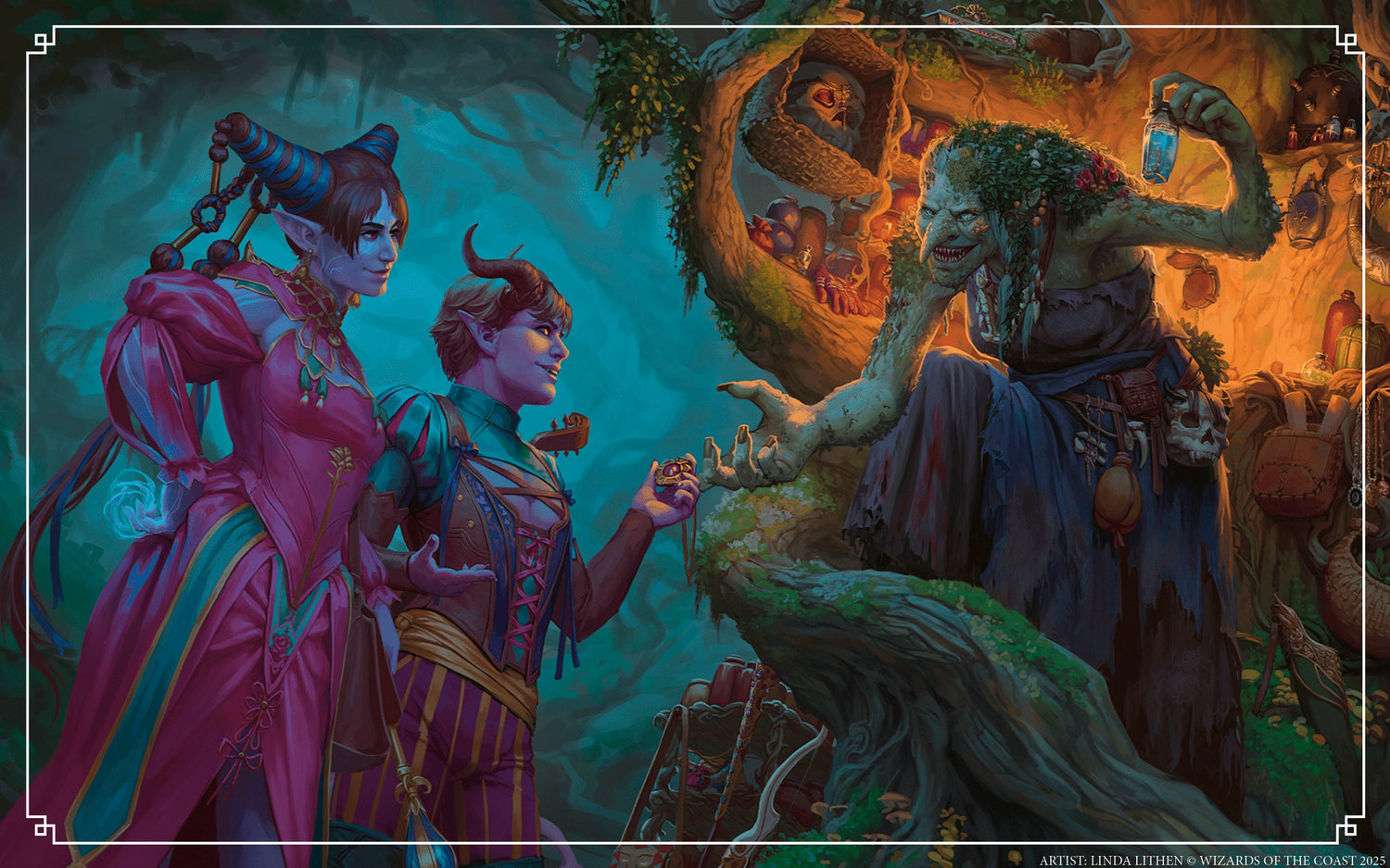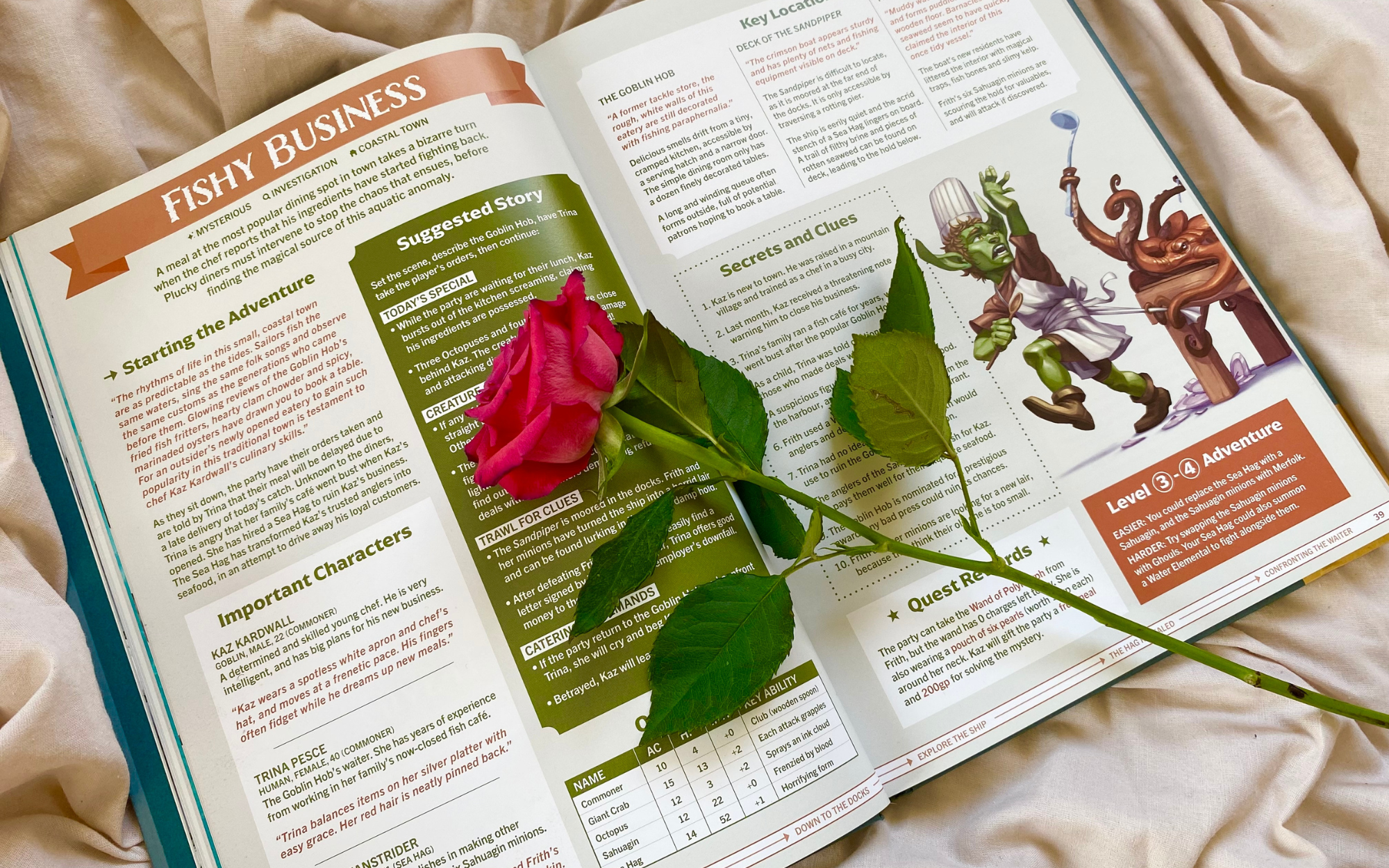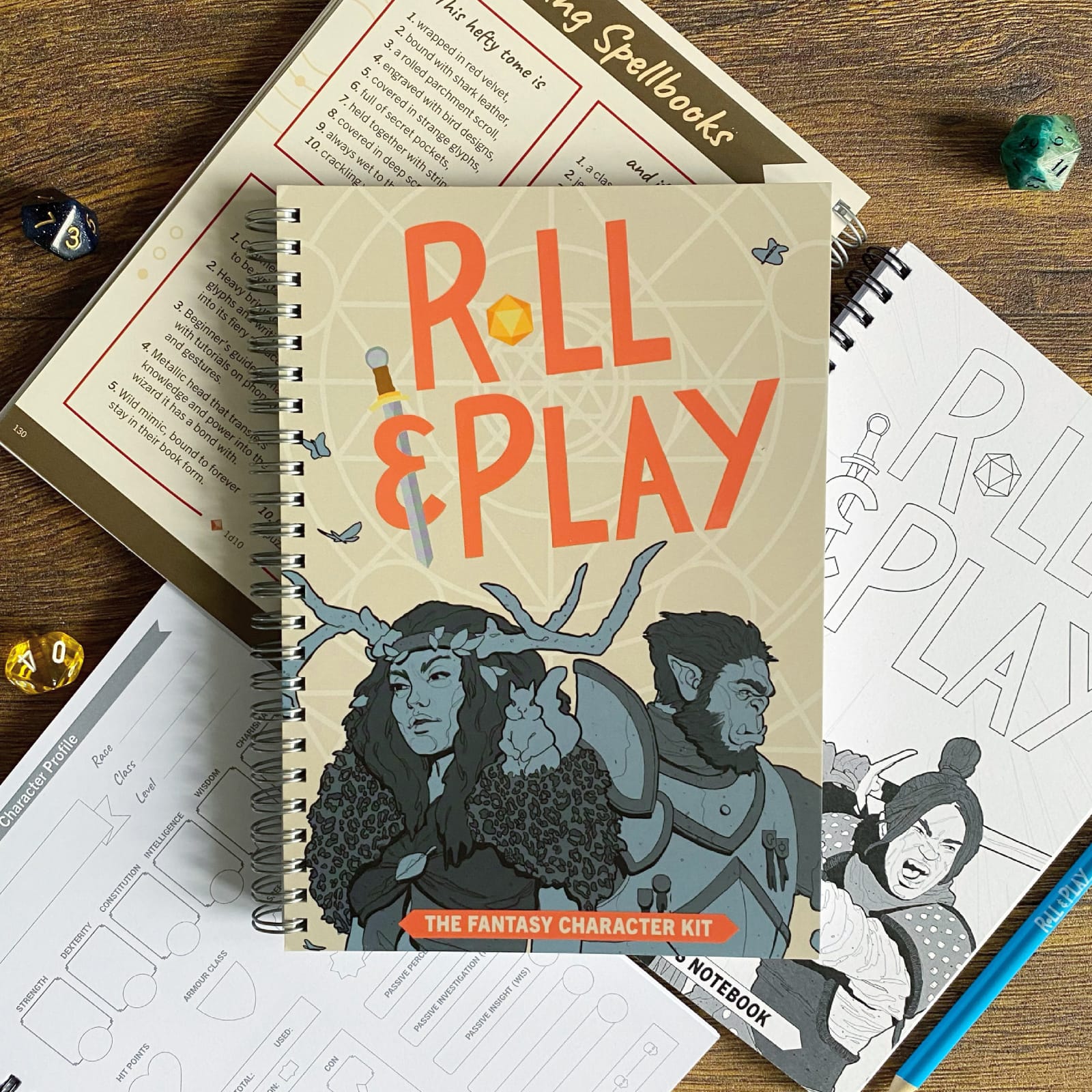With a new 2024 Dungeon Master's Guide and Player's Handbook now released (and the 2024 Monster Manual on its way in February) lots of people have been asking: should I stick with 2014 D&D or move to the new 2024 rules?
I’ve been DMing using the 2014 D&D rules for the past seven years, and haven’t switched over to the new rules for my current home game. But, for the new campaign I’m running for the Roll & Play Press team, we’ll be using the 2024 rules and have already got character creation sorted. So, I’ll break down some of the reasons for and against making the change, and share some tips to help you figure out what rules to use in your campaigns.

Where to get the 2024 DnD rules for free
Before I dive in, it’s worth having a flick through the free-to-access online versions of the 2014 rules and the 2024 rules on D&D Beyond, to get a sense of some of the changes:
I also wrote a blog post last year that explained the key differences between the two D&D rule sets. The main thing I’d say is that the new rules are more of an update than an overhaul. Unless you know the rules inside out, or you’ve played lots of different classes in multiple lengthy campaigns, you’re not going to feel much difference with the rule changes.
That leaves the question, if the rules aren’t that different, is it worth changing? Keep reading for my thoughts on that.

Why stick with the 2014 DnD Rules?
1. You’re in the middle of a campaign.
For groups that are in the middle of a long-running campaign, changing the rules part way through could slow things down or cause confusion. Certain skills and spells work differently in 2024 D&D, so players would need to learn the updated rules and get familiar with these changes if they were to switch. If you’re already having fun in your campaign, and don’t have any problems with the rules, sticking with the 2014 Dungeon & Dragons rule set for your current campaign is your best bet.
2. You’re a GM with players who need a lot of support
If you run games for less experienced or less confident players, it’s likely that they rely on you for guidance on what their characters can or can’t do. Learning all the minor changes for the classes in your party will take a lot of work from you as the GM. So, if your players have recently started learning D&D with the 2014 rules, I’d recommend waiting until they have a bit more experience under their belts before hitting them with the new rules and new 2024 character sheet. Then, when they’ve got the hang of playing D&D, you could decide as a group whether you want to try out the new rules.
3. You don’t want to spend money on all-new rulebooks
The free version of the 2024 rules give you the essential information you need to play a campaign. However, it doesn’t include some of the helpful additional tips and content that you’ll find in the full 2024 Player’s Handbook, Dungeon Master’s Guide and Monster Manual. So, if you’re a GM who refers to the rulebooks regularly and don’t want to spend on replacements, don’t feel pressured to change to the new rules. The books and rules you already own give you everything you need to run amazing adventures.
4. You play an Artificer or have one in your party
The Artificer class was released as part of the official D&D book Tasha’s Cauldron of Everything, created with the 2014 D&D rules. Lots of groups (including my home game), have an Artificer in their party. The 2024 Player’s Handbook doesn’t include new rules for the Artificer, so anyone playing that class would miss updating their character with the rest of the group. It’s been announced that rules are coming for the Artificer soon; D&D have released playtest rules in their recent Unearthed Arcana, and have released a video explaining the changes. So, unless you’re happy to use rules that aren’t final, Artificers would need to wait before switching to 2024 D&D.
5. You want to wait for the new 2024 Monster Manual
Until the 2024 Monster Manual is released on 18 February 2025, you won’t have a complete rule set for the 2024 D&D rules. In the meantime, you’ll have to use the 2014 Monster Manual, and combine the two different rule sets. For example, if the monster you’re using is a spellcaster, and they use spells that have changed in the 2024 rules, you will need to decide whether you want to use the old spell rules or the new spell rules. This could have a knock-on impact on how the monster works, and how their Challenge Ratings are balanced.

Why move to the new 2024 DnD rules?
1. You’re about to start GMing for the first time
If you’re about to set off on the rewarding journey of becoming a GM, and are wondering which rule set to use, I would recommend going with the new 2024 D&D rules. The 2024 Dungeon Masters Guide has a lot of helpful tips and suggestions for game masters, the layout of the new rulebooks is much easier to use, and the language is much clearer too. The same goes for the 2024 Player's Handbook, it’s much easier for new players to navigate, and I expect the 2024 Monster Manual will also have these improvements. 2024 rules are the way to go if you’re brand-new.
2. You want to shake things up with new content
With a new edition comes fresh content – new subclasses, spells, monsters, and settings. If you and your group enjoy D&D and aren’t looking for a new system, but want to add a new spark to your games, moving to the 2024 rules could shake things up and inspire fresh ideas and adventures. If you’re wrapping up your current campaign and about to move into a new one, now’s a good time to swap rule set.
3. You mostly run official D&D campaigns/adventures
Future releases of official D&D material will be designed with the new 2024 rules in mind. This means you’ll find references in new material to mechanics that might only be in the 2024 rules (e.g. Bastions), or face off against monsters that are new for 2024. Anyone who collects the official D&D books and runs campaigns from them regularly would get value out of changing to the new rules sooner rather than later. As time goes on, you’ll start to see more 3rd party content supporting the 2024 D&D rule set, too.
4. You regularly run sessions for new groups
If you run sessions for lots of new groups and people you’ve never played with before (e.g. conventions, social clubs, gaming stores), it will help to be on top of the new 2024 D&D rules, even if you don’t plan to switch over to them. You will most likely start coming across players who bring characters built with the new rules, or use terminology from the new rules. It will make your life easier if you’re able to spot when that’s happening, so you can decide how you want to manage it in the games you’re running.
5. You want access to new art for monsters and characters
The new 2024 D&D rulebooks are full of brand-new artwork; there’s a load more full-size art and helpful reference images for magic items, monsters, species and character classes. If you’re a visual learner like me, having lots of art to refer to will help kickstart your imagination, and make it easier for you to detail what’s happening at your table with verbal descriptions and handouts. This will especially have an impact with the 2024 Monster Manual, as Dungeons & Dragons have confirmed that monster artwork will include environment/setting imagery – rather than the monsters only being on a white background like in the 2014 Monster Manual.

Will other books based on 2014 DnD rules still work with the 2024 rules?
One of the main questions I’ve had from GMs, is whether campaign settings and other books based on 2014 D&D will work with the new rule set. There will be a ton of content from your book collection that will work seamlessly with the new rules. Things like campaign setting lore, adventure storylines and random encounter generators can be used without changes in your 2024 D&D adventures. Magic items and monsters should be fine to port over to the new rule set, but keep your eyes peeled for references to game mechanics that may have changed (e.g. spell effects).
Classes and subclasses created using the 2014 rules will require the most adaptation for use in your 2024 D&D games, mainly due to changes in the levels at which characters gain new abilities and feats. Mixing and matching different rule sets is better suited to experienced GMs who are used to rebalancing rules to suit their party.
Tips to Help You Decide
Try a One-Shot
Before committing, you could run a one-shot using the new free 2024 D&D rules. A one-shot is a low-pressure way to see how you feel before diving into a whole campaign. Our book One-Shot Wonders has over 100 one-shots to choose from, so why not jump in using the new rules and see what you think? One-Shot Wonders is based on the 2014 rules, but is written in a way that’s super flexible for any RPG system, so you can easily use it for either rule set. We’ve got free one-shots here too.
Talk to Your Group
Chat with your party about what they want. Are they excited to try something new, or are they happy with the 2014 D&D rules? Getting everyone’s input will help you make the right call.
Final Thoughts
Whether you stick with 2014 D&D or switch to the new 2024 rules, the most important thing is having fun at your table. The rules are just tools to help you tell stories and create unforgettable moments with your friends.
And, if you’re still unsure, remember: there’s no rush. The 2014 D&D rules aren’t going anywhere, and the new 2024 D&D rules will be around for years to come. Take your time, try things out, and choose what feels right for your group.



